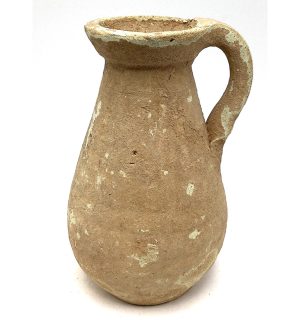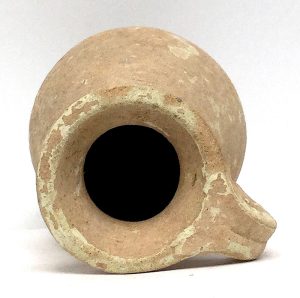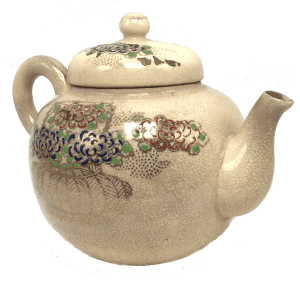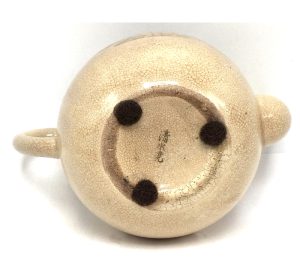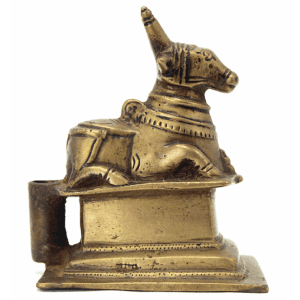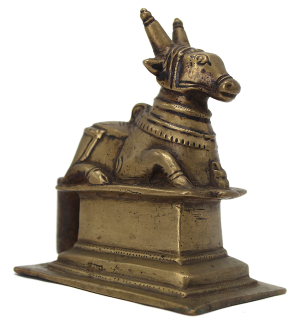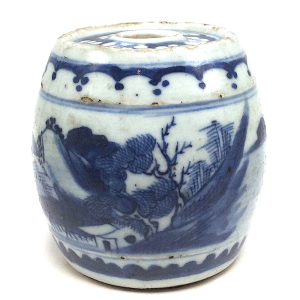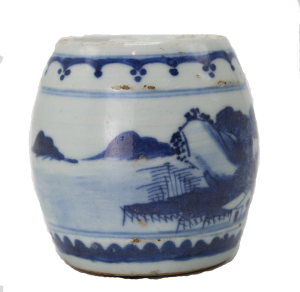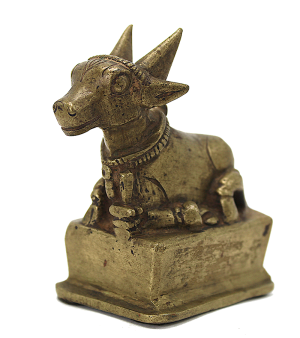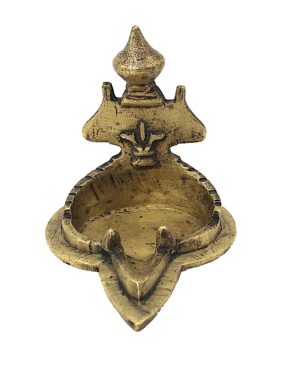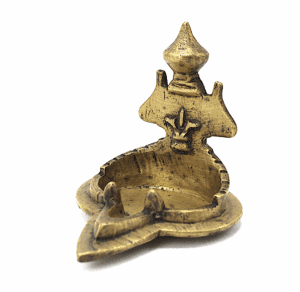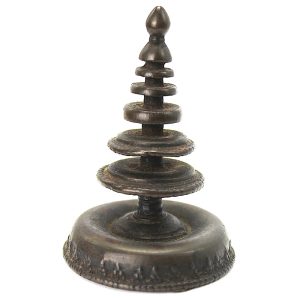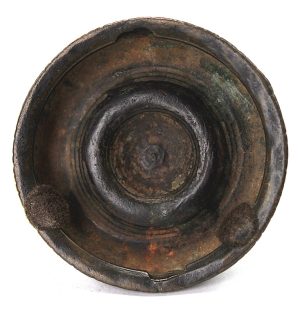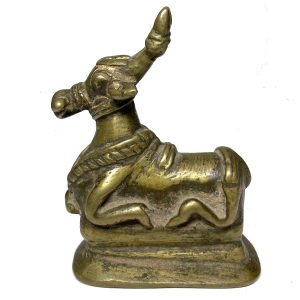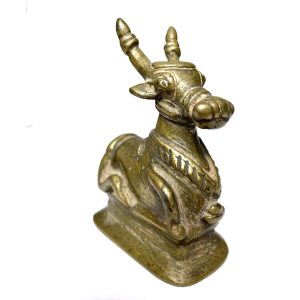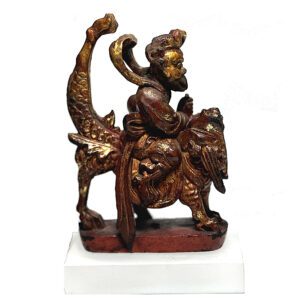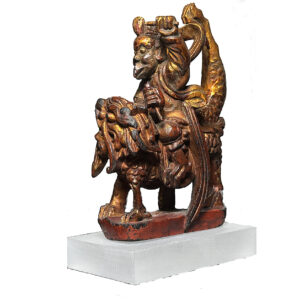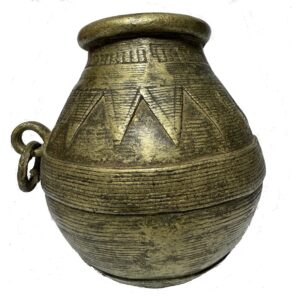Showing 1–12 of 26 results
-
Sale!


$395.00 Original price was: $395.00.$315.00Current price is: $315.00.
H: 2.5″ W: 4.5″ D: 2.375″ | FREE SHIPPING WITHIN CONTINENTAL U.S.!
This diminutive mingqi pig is totally charming and fanciful with an iridescent glaze and would be especially appealing as a send off for the deceased to the nether world or in a contemporary setting. Pigs were especially prized and images were often included as items the deceased would need to live comfortably in the after life.
-
Sale!


$275.00 Original price was: $275.00.$210.00Current price is: $210.00.
H: 4.5” W: 3” D: 2.75” | FREE SHIPPING WITHIN CONTINENTAL U.S. !
Greek style Oenochoe wine jugs were made in Roman North Africa and exported throughout the empire. Potters wheel made unadorned coarse wears like this small vessel with everted rim were made for daily use and for offerings to deities.
-
Sale!


$285.00 Original price was: $285.00.$225.00Current price is: $225.00.
H: 4” W: 5.25” D: 3.5” | FREE SHIPPING WITHIN CONTINENTAL U.S.
Hand thrown and -painted Meiji single serving Kyo Ware teapot with luminescent crackled glaze and kiln seal. A chrysanthemum in a basket symbolizes longevity and rejuvenation. Kyo ware is limited, making it collected worldwide.
-
Sale!


$245.00 Original price was: $245.00.$165.00Current price is: $165.00.
H: 4.5″ W: 2.25″ D: 3.25″ | FREE SHIPPING WITHIN CONTINENTAL U.S.
Antique recumbent long horned Nandi seated on a high pedestal throne, with jeweled decorations on head and body is an incense holder . Beautiful patina, finely cast.
-
Sale!


$255.00 Original price was: $255.00.$195.00Current price is: $195.00.
H: 3.25” Dia: 3.25” | FREE SHIPPING WITHIN CONTINENTAL U.S.
With its round body covered with a Chinese village landscape, mountains, seas and calligraphic scholar owner’s name, this ceramic brush holder/paper weight was used a scholar’s desk along with pots, brushes, water droppers, boxes, ink stones and other objects and would be perfect on any style desk.
-
Sale!


$155.00 Original price was: $155.00.$125.00Current price is: $125.00.
Ht: 3.5″. W: 1.75″ D: 2.5″ FREE SHIPPING WITHIN CONTINENTAL U.S.
Lost-wax one of a kind brass Nandi figurine on a high pedestal, is incised with decorative detailed adornments on his head and neck with beautiful patina from long daily use in home Hindu pujas.
-
Sale!


$165.00 Original price was: $165.00.$125.00Current price is: $125.00.
H: 3.75″ W: 3″ D: 3.5″ | FREE SHIPPING WITHIN CONTINENTAL U.S.
Heavy brass antique votive Vishnu diya with yoni (womb) shaped cup symbolizing fertility, short walls and spout to store oil and hold the wick, and ornate back panel topped by a lotus bud and 3 lines symbolizing Vishnu. Vishnu diyas are a Hindu tradition of followers called Vaishnavites or Vaishnavas .
-
Sale!


$425.00 Original price was: $425.00.$295.00Current price is: $295.00.
H: 3.5″ Dia 2.5″ | FREE SHIPPING WITHIN CONTINENTAL U.S.
Hand-made metal Nepalese 7-level stupa/pagoda with decorative details around the base and round eaves with scalloped edges used for personal worship.
-
Sale!


$395.00 Original price was: $395.00.$225.00Current price is: $225.00.
H: 3.25” W: 1.375” D: 2.5” |. FREE SHIPPING WITHIN CONTINENTAL U.S.
Antique brass Nandi exquisitely crafted with a wonderfully aged patina from use on a home altar. On a raised rectangular platform his delicate incised decorative details delineate features of his sinuous body and graceful long horns extending backwards. Based on a South Indian cow with a humpback.
-
Sale!


$275.00 Original price was: $275.00.$225.00Current price is: $225.00.
Finely carved from dense wood Mazu is the Heavenly Empress on a horseshoe chair, holding official’s girdle, phoenix hat with outstretched wings and cloud collar symbolizing her place in heaven.
-
Sale!


$345.00 Original price was: $345.00.$225.00Current price is: $225.00.
H: 6″ W: 2.5″ D: 4″ | FREE SHIPPING within continental US.
Miniature Taoist Thunder God who protects from injustice and punishes evildoers with his drum, mallet, chisel. Has bird’s beak and claws and dragon’s wings, rides a mythical hou. Part of bed frame carving with many protective deities.
-
Sale!


$165.00 Original price was: $165.00.$125.00Current price is: $125.00.
H: 4.25” Dia: 4” | FREE SHIPPING IN CONTINENTAL U.S.
Dhorka brass lost wax grain and rice measuring bowl. One-of-a-kind intricately decorated with horizontal and triangular striations. Bowls were symbol of Hindu goddess Lakshmi placed on home altars for puja.
End of content
End of content



